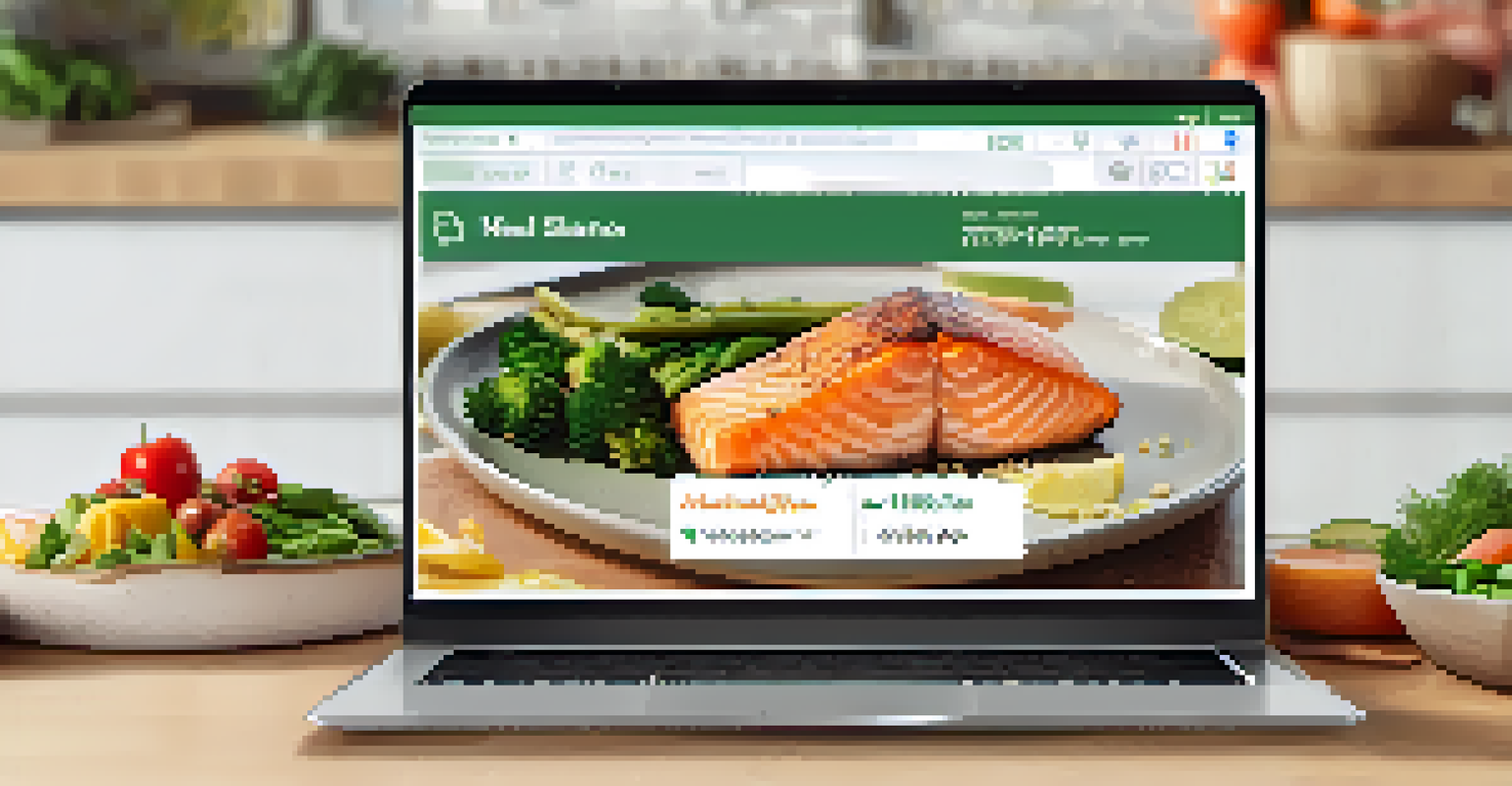Culinary Medicine in Action: Case Studies and Success Stories

What is Culinary Medicine and Why It Matters
Culinary medicine is an innovative approach that blends nutrition with cooking skills to promote health and prevent disease. It empowers individuals to make informed dietary choices while enjoying the process of cooking. By integrating medical knowledge with culinary arts, this discipline addresses the growing need for personalized healthcare solutions.
Let food be thy medicine and medicine be thy food.
As our understanding of the link between diet and health expands, culinary medicine has emerged as a vital tool for healthcare professionals. It enables them to guide patients towards healthier eating habits effectively. This multifaceted approach not only focuses on what we eat but also how we prepare our meals.
With rising rates of chronic diseases linked to poor nutrition, culinary medicine is becoming increasingly relevant. It offers a proactive strategy by equipping individuals with practical skills and knowledge to improve their well-being. This shift towards a more holistic view of health reflects a broader trend in modern medicine.
Case Study: Culinary Medicine in Diabetes Management
One notable case study involved a group of patients with Type 2 diabetes participating in a culinary medicine program. They learned how to prepare balanced meals and understand food labels, leading to significant improvements in their blood sugar levels. The interactive nature of the program fostered a supportive community that motivated participants to stay on track.

Participants reported not just physical changes but also a newfound joy in cooking and eating. Many of them began experimenting with new recipes and ingredients, which made healthy eating feel exciting rather than restrictive. This transformation illustrates how culinary medicine can impact both physical and emotional health.
Culinary Medicine Empowers Health
Culinary medicine combines cooking skills with nutritional knowledge to promote healthier eating habits and prevent disease.
By focusing on practical skills and education, this case study highlights the potential of culinary medicine to empower individuals. It shows that with the right tools and knowledge, patients can take control of their health in a delicious way. Such success stories are becoming more common as culinary medicine gains traction.
Success Story: Heart Health Through Culinary Intervention
Another inspiring success story comes from a community program aimed at reducing cardiovascular disease risk. Participants, many of whom had family histories of heart issues, learned to cook heart-healthy meals rich in whole grains, fruits, and vegetables. The program emphasized cooking techniques that reduced unhealthy fats and sodium without sacrificing flavor.
You are what you eat, so don’t be fast, cheap, easy, or fake.
Over six months, participants not only improved their cholesterol levels but also experienced weight loss and increased energy. Many shared how they felt more connected to their families while preparing meals together. This sense of community reinforced their commitment to healthier eating habits.
This story underscores the broader impact of culinary medicine beyond individual health. It fosters social connections and enhances overall quality of life, proving that food can be a powerful medicine. As more people share their experiences, the movement continues to grow and inspire.
Integrating Culinary Medicine in Medical Training
Recognizing the importance of culinary medicine, some medical schools have begun incorporating it into their curricula. Future healthcare professionals are learning how to address dietary concerns alongside traditional medical training. This approach aims to create a new generation of doctors who are well-equipped to discuss nutrition with patients.
By participating in hands-on cooking classes, students gain practical skills that they can share with their patients. This experiential learning helps bridge the gap between theory and practice, making nutritional advice more relatable and actionable. It’s an exciting development that acknowledges the role of food in health.
Community Programs Foster Change
Community-based culinary medicine initiatives provide education and resources, empowering underserved populations to reclaim their health.
As culinary medicine becomes a standard part of medical education, we can expect to see a shift in patient care. Doctors will be more comfortable discussing food-related health issues, leading to more comprehensive treatment plans. This integration could revolutionize how we approach health and wellness in the future.
Community-Based Culinary Medicine Initiatives
Community-based culinary medicine initiatives are popping up across the country, focusing on underserved populations. These programs aim to provide access to healthy cooking resources and education, often in areas with limited grocery store options. By prioritizing local ingredients and cultural preferences, these initiatives foster a sense of ownership over health.
Participants not only learn to prepare nutritious meals but also engage in discussions about food systems and health disparities. This holistic approach empowers communities to advocate for better food access and education. For many, it’s a chance to reclaim their health in an environment that supports their choices.
These initiatives highlight the power of community in promoting health. By bringing people together around food, culinary medicine can create lasting change. It’s a reminder that when we invest in our communities, we invest in our collective health.
The Role of Technology in Culinary Medicine
In today’s digital age, technology plays a vital role in the evolution of culinary medicine. From online cooking classes to nutrition apps, technology makes it easier for individuals to access information and resources. These tools can enhance learning and motivate people to adopt healthier habits.
For instance, many apps offer meal planning features that cater to specific dietary needs, making it simple to stick to health goals. Virtual cooking demonstrations allow people to learn from experts without leaving their homes. This accessibility is particularly important for those who may not have local programs available.
Tech Enhances Culinary Learning
Technology plays a crucial role in culinary medicine by providing accessible resources like online classes and nutrition apps to support healthier lifestyles.
As technology continues to advance, it will likely further integrate into culinary medicine. This fusion of health and tech can help bridge gaps in knowledge and empower individuals to take charge of their nutrition. The future of culinary medicine is bright, with endless possibilities for innovation.
Challenges and Future Directions in Culinary Medicine
While culinary medicine is gaining popularity, it faces challenges that need addressing. One significant hurdle is the need for standardized practices and training for healthcare professionals. As more programs emerge, consistency in education and application will be crucial for effectiveness.
Another challenge lies in reaching diverse populations with different cultural backgrounds and dietary needs. It’s essential to tailor culinary medicine approaches to respect and incorporate these differences. Doing so will ensure that the movement is inclusive and impactful for everyone.

Looking ahead, the future of culinary medicine appears promising. With continued advocacy and research, we can expect to see more widespread acceptance and integration into healthcare practices. The journey toward a healthier society is ongoing, and culinary medicine will undoubtedly play a pivotal role.